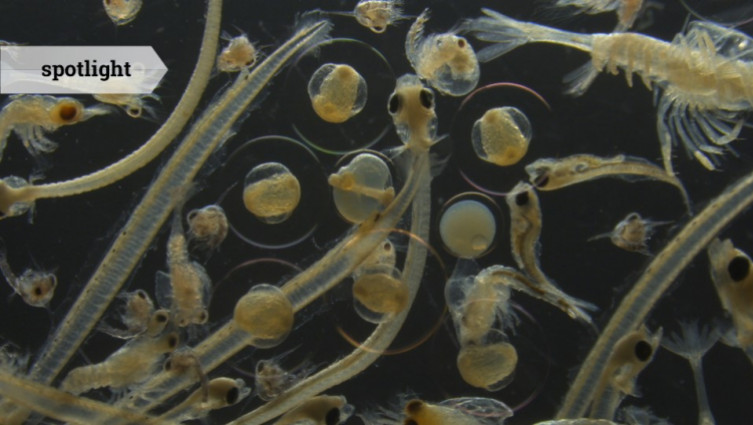Understanding how zooplankton responds to sudden environmental change
During her PhD project, Joana Cruz focused her research on plankton communities and secondary production in Portuguese coastal waters. During her research, she used a more intensive sampling during the most productive season of Ria Formosa lagoon system to see how zooplankton responds to sudden modifications in the environment.
Plankton communities as indicators of environmental change
Coastal lagoons such Ria Formosa, in the south of Portugal, are shallow and nutrient-rich ecosystems. They are typically unstable environments, threatened by climate change and usually under intense anthropogenic pressure. To such modifications in the environment, planktonic organisms are quick to respond, hence they are considered good indicators of environmental change in ecosystems.
However, it is difficult to infer the specific links between environmental variability and plankton dynamics in coastal lagoons, as previous studies focus mostly on long-term temporal scales using monthly or seasonal sampling strategies. Joana’s study analyzed several ecological indicators of the tiny copepod Acartia clausi in Ria Formosa (a temperate coastal lagoon) during the summer, using an intensive sampling approach.
Main factors affecting zooplankton communities
Results from this study showed that Ria Formosa coastal lagoon system presents a high variability in the zooplankton community abundances, composition or production, in a short temporal scale. The factor that better explained this variability was salinity, followed by tidal phase, temperature and food.
The important role of zooplankton to study climate changes and anthropogenic impacts
This study reveals that different timescales should be used in regular monitoring of planktonic communities.
Monitoring zooplankton is extremely helpful to study climate changes and to monitor anthropogenic impacts, as these organisms respond rapidly to modifications in the environment. It also improves fisheries management, given that they are important food items for the early life stages of many fisheries resources inhabiting Ria Formosa lagoon system.
PDF article HERE.


